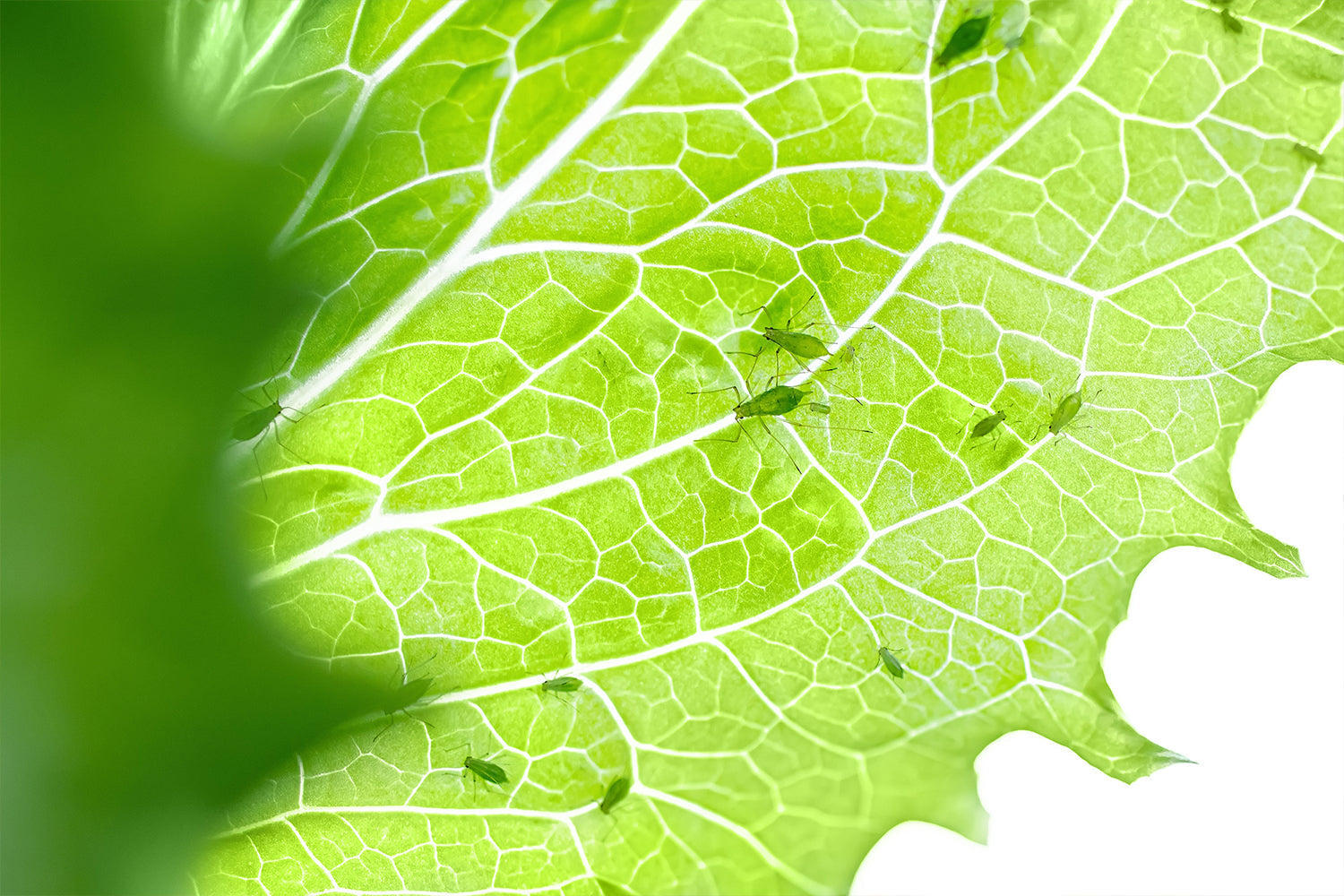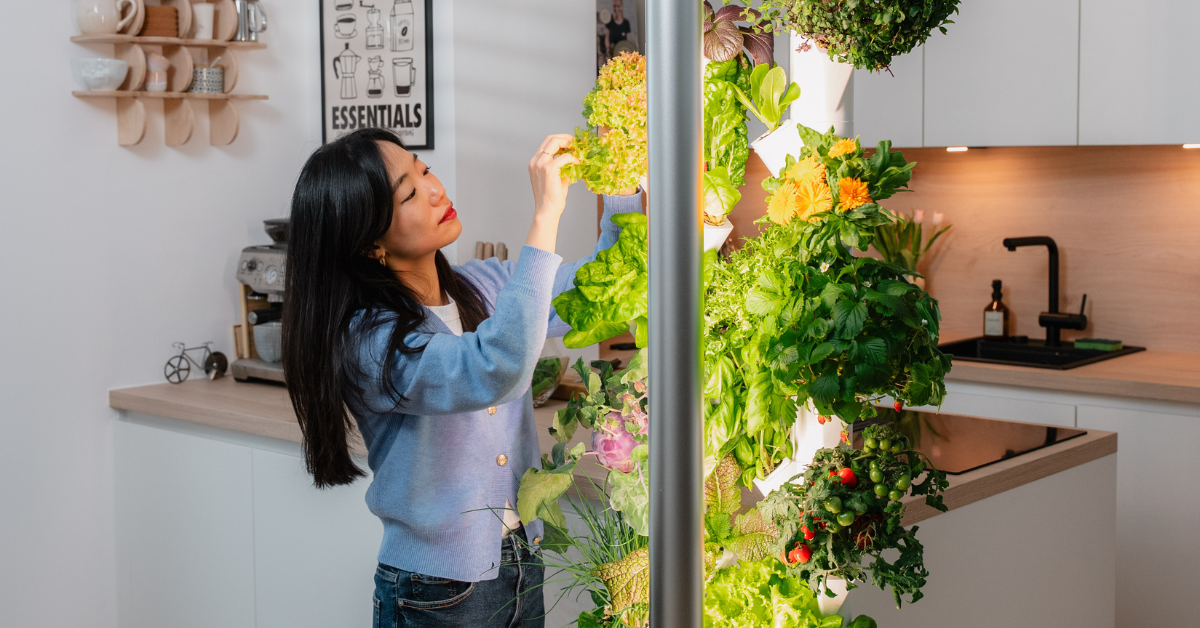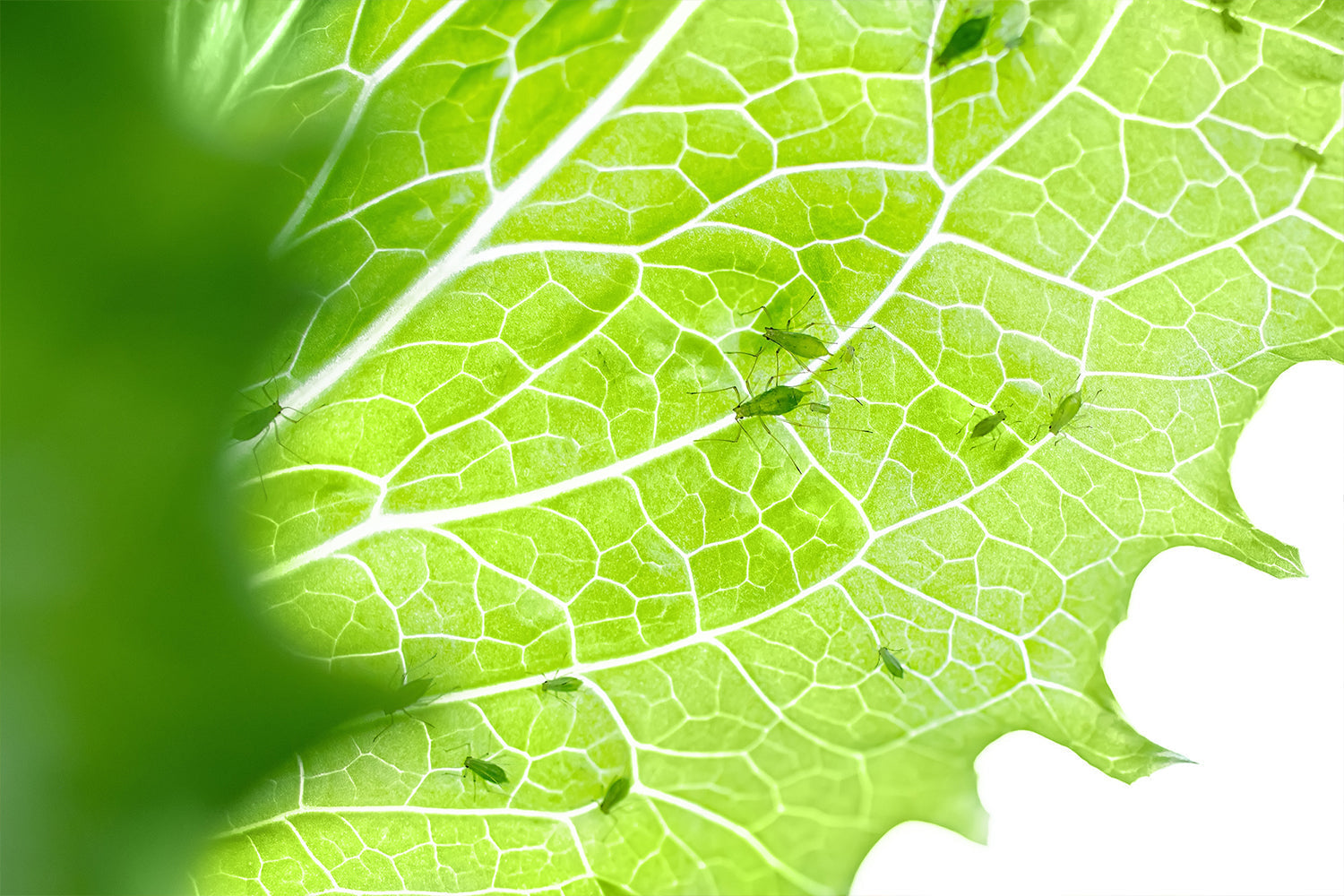When you grow plants indoors, you'll certainly experience the joys, but also the occasional challenges that can arise. Despite the lower likelihood of pests indoors compared to the garden, it's still possible for them to appear. These unwanted guests could hamper the growth of your plants and occasionally threaten your harvest. Indoors, these pests have no natural enemies to stop them.
But don't worry, we're here to help! This guide not only provides an overview of possible pests you might encounter, but also presents environmentally friendly solutions to successfully combat these unwelcome guests.
Overview of pests in indoor hydroponic gardens
Let's take a look at which pests might make their home in your indoor hydroponic garden. Even in a controlled environment, these unwanted visitors can appear and cause unrest among your plants.
The most common pests include aphids, spider mites, whiteflies, and fungus gnats . You can often detect their presence by their symptoms: discolored leaves, sticky residue, limp plants, or even visible pests on the leaves.
But don't panic! With a little attention, prevention, and the right tools, you can effectively and environmentally friendly combat these pests without compromising the health of your plants or your own.
General methods for pest prevention
Before we delve into specific pests, it's important to understand how to keep these unwanted guests away. Pest prevention is the first step in protecting your plants from potential damage.
Hygiene is key: Keep your growing and maintenance area clean and perform regular routine tasks, such as changing the water monthly. Wash your hands and roll up your sleeves before starting gardening. Regularly remove dead leaves or plant debris and keep your equipment clean to prevent pests from breeding grounds.
Check and inspect: Conduct regular inspections of your plants to detect early signs of pest infestation. Pay attention to the undersides of the leaves, too. The earlier you notice a pest infestation, the easier it is to treat it.
Choose a suitable location: Make sure your indoor garden is as isolated from other plants as possible. Keep fruit and vegetable shopping bags, where pests often hide, away. Avoid placing your hydroponic system near windows and doors that are opened regularly. This will prevent outside pests from infesting your garden. We also recommend keeping your indoor garden away from pets, as pets often bring pests into the house.
By following these simple yet effective methods, you will lay the foundation for a healthy plant environment and minimize the risk of pest infestation in your indoor hydroponic garden.
Environmentally friendly pesticides
Now let's move on to the environmentally friendly methods we can use to combat pests in your hydroponic garden. Hydrogen peroxide and neem oil play an important role here.
Hydrogen peroxide : This versatile agent, when diluted, can serve as an effective disinfectant and pesticide. A diluted 3% hydrogen peroxide solution can be used to control pests and promote plant health.
Neem oil : Extracted from the seeds of the neem tree, neem oil is a natural insecticide and fungicide. A diluted solution of neem oil (1-2 teaspoons per liter of water) can be sprayed on plants to control pests without harming humans or pets.
Beneficial insects as pest controllers: In addition to these home remedies, there are also useful little helpers that can assist you in the fight against pests in your indoor hydroponic garden. Predatory mites are one such beneficial species, available in the form of small sachets that can be easily placed in your garden.
These tiny but effective predators are natural enemies of many pests, including thrips, spider mites, and other small insects that may threaten your plants. They feed on the pests' larvae, helping to keep their populations under control.
By using predatory mites in your indoor garden, you create an ecological balance and support natural pest control.
These eco-friendly solutions are not only safe for your plants, but also for you and the environment. They offer an effective way to control pests without resorting to harsh chemicals.
Detailed information on pests and solutions
a. Aphids

Aphids can appear in your indoor hydroponic garden and cause damage. They leave a sticky residue on the leaves and weaken your plants by draining their sap.
To control aphids in your Everleaf Garden, you should follow these steps:
- Preparation: Remove the most severely infested plants and dispose of them in the compost or trash. Harvest as much of the remaining plants as possible to increase air circulation and provide fewer hiding places for pests. Prune heavily infested leaves and branches to reduce the pest population.
- Castile soap bath: Prepare a water bath using one tablespoon of castile soap per liter of warm water. Immerse the plants upside down in the solution, just above the substrate, and shake them under water to loosen the aphids. Then, pat the plants dry with a towel to remove excess moisture. Repeat this process every four days, at least four times in total, to interrupt the aphid life cycle. Turn off the lights in the Everleaf Garden for four hours to allow the plants to dry completely, as the light could otherwise burn the leaves.
- Check: After treatment, check your plants regularly for any remaining aphids. Make sure to check under the leaves, on the stems, and on new growth.
- Follow-up treatment: If you still find aphids, you can repeat the treatment or consider discarding all plants and thoroughly cleaning your system before planting new plants.
Castile soap is safe for use on plants because it's made from natural oils and leaves no harmful residues. It's biodegradable and safe for humans and the environment. However, the vegetables should still be washed with water before consumption.
Those who prefer a simpler approach can also use commercially available insecticides that are also suitable for indoor use. The use of beneficial insects such as ladybugs or predatory mites can also help with the control.
b. Spider mites

Prevention: Increase humidity and ensure good ventilation to reduce the risk of infestation.
Solutions:
For a light infestation, harvest as much as possible first to increase air circulation and reduce hiding places for pests. Rinse your plants in the sink or outside with a hose to remove the pests. As described in the aphid control section, perform a castile soap bath every 4-5 days by submerging the plants in a bath of castile soap up to the substrate. Repeat this process at least 4 times to interrupt the pest life cycle on each plant. Consider also using beneficial insects to naturally control the pests.
In case of severe infestation, you should discard the most severely affected plants. In some cases, it may be helpful to transplant infested plants outdoors to allow the ecosystem to naturally combat the pests. Perform a castile soap bath every 4-5 days, at least 4 times in total, to interrupt the pest life cycle. If the infestation is still severe after two weeks, discard all plants and thoroughly clean your Everleaf Garden. Let it stand empty for 3-4 weeks before planting new plants.
c. Whiteflies

Whiteflies are small flies that rise up when plants are disturbed and suck their sap.
Prevention: Plants like thyme, basil, and sage can prevent infestations by repelling flies with their scent. Place yellow fly traps to catch adult flies and keep the growing area clean.
Solutions: Use environmentally friendly options like castile soap mixed with water in a spray bottle to control whiteflies. Spray the plants where you see adult flies, including the tops and undersides of the leaves, with the castile soap solution. Mix one tablespoon of castile soap with one liter of water. Turn off the lights in the Everleaf Garden for 4 hours to allow the plants to dry without burning the leaves. Repeat this process every 4 days until no adult whiteflies are seen.
To control young whiteflies, soak the infested plants in a castile soap bath every 4-5 days, at least 4 times in total. This helps interrupt the pests' life cycle. You can find more information about castile soap baths in the aphid control section above.
You can also effectively combat the infestation with the help of beneficial insects.
d. Fungus gnats

These small flies lay their eggs in moist substrate, resulting in a larval population that can damage roots.
Prevention: Check your water tank and substrate for small larvae. Use yellow fungus gnat traps to catch adult fungus gnats.
Solutions: Adult fungus gnats must always be controlled simultaneously with the larvae using fungus gnat bait to prevent further spread. The most effective way to combat the larvae is with hydrogen peroxide. Add 1-2 ml of hydrogen peroxide (3%) per liter of water to the water tank once a week. We recommend using stabilized (food-grade) hydrogen peroxide, as it does not dissolve quickly. You can also spray the substrate with a neem oil and water mixture to combat the fungus gnat larvae.
Beneficial insects can also be an effective method of controlling fungus gnats.
Conclusion
It's important to understand that pest control in an indoor hydroponic garden doesn't have to be a war against nature. By using environmentally friendly methods, careful monitoring, and targeted care, you can maintain the health of your plants while protecting the environment and your own health.
By considering and implementing these different pest control methods, you can create a thriving and healthy indoor garden landscape that is free of pests.
Bonus: Choose the right plants to avoid pests
Some plants are known to be more susceptible to pests, while others may offer natural pest defenses due to their properties. If you experience repeated pest problems, we recommend adjusting your plant selection. While there's no 100% guarantee, tests have shown that some plants are better suited than others.
You should avoid these varieties to keep pests away:
Peppers, eggplants, cucumbers, pak choi and endives
These varieties are particularly resilient and can help keep pests away:
Kohlrabi, lettuce, chard, kale, basil, chives, mint, thyme



